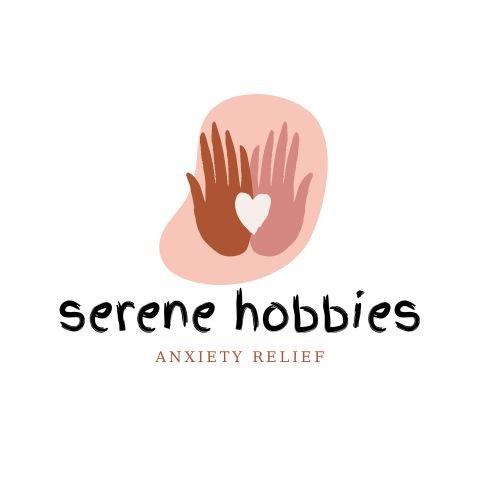Singing works as a powerful exposure therapy tool because it activates multiple healing mechanisms in your brain and body simultaneously. You'll experience reduced anxiety through regulated breathing patterns, while the release of dopamine and serotonin helps calm your nervous system. The act of singing engages deep emotional processing through neural pathways connecting your auditory system to your limbic system. When you sing in groups, you'll benefit from social connection and synchronized breathing, which builds confidence gradually. Physical tension melts away through vocal vibrations and diaphragmatic breathing. The science behind singing's therapeutic effects reveals an intricate web of psychological and physiological benefits worth exploring.
The Science Behind Musical Expression

The intricate relationship between music and human emotion stems from neural pathways that connect our auditory system to the limbic system. When you sing, you're engaging multiple brain regions simultaneously, including those responsible for memory, emotion regulation, and motor control.
This neural synchronization creates a powerful therapeutic effect that can help reshape your emotional responses to anxiety-triggering situations. Your brain releases dopamine and serotonin during musical expression, naturally reducing stress and anxiety levels.
When you vocalize, you're also regulating your breathing patterns, which directly influences your autonomic nervous system. This physiological response helps calm your fight-or-flight reactions and promotes a state of relaxation.
The act of singing combines cognitive processing with emotional expression, creating new neural pathways that can override established anxiety patterns. You'll find that your brain processes musical information differently from speech, engaging both hemispheres more fully.
This bilateral activation strengthens your ability to process and manage emotional responses, making singing particularly effective as an exposure therapy tool. The rhythmic nature of music also provides a structured framework that helps you maintain focus and regulate emotional intensity during therapeutic sessions.
Physical Benefits of Vocal Release
While mental health benefits of singing are well-documented, physical advantages emerge through vocal release that directly impact your body's stress response system. When you sing, you're engaging in deep diaphragmatic breathing, which triggers your parasympathetic nervous system and reduces cortisol levels. Your heart rate variability improves, indicating better stress resilience and cardiovascular function.
You'll notice immediate physical changes as you vocalize: your muscles relax, especially in your neck, shoulders, and jaw areas where tension commonly accumulates. The vibrations created during singing massage your larynx and respiratory tissues, improving blood circulation and oxygen flow throughout your body.
You're also strengthening your intercostal muscles and diaphragm, which enhances your breathing capacity and posture. The physical act of singing releases endorphins and oxytocin, your body's natural pain-relievers and mood enhancers.
Your immune system gets a boost too – research shows increased levels of immunoglobulin A in saliva during vocal expression. These physiological responses create a positive feedback loop: as your body relaxes, you'll find it easier to maintain proper breathing techniques and vocal control, further amplifying the therapeutic benefits.
Breathing Patterns and Anxiety Control

When you sing, you'll naturally engage in regulated breathing patterns that can help reduce anxiety symptoms.
Your breath control during vocal exercises mirrors many techniques used in anxiety management, particularly as you focus on deep diaphragmatic breathing.
You'll find that singing forces you to coordinate your inhales and exhales in a structured way, creating a natural rhythm that helps stabilize your nervous system.
Regulated Breathing Through Song
Breathing patterns take shape naturally during singing, creating an automatic form of respiratory regulation that can help manage anxiety. When you sing, you'll instinctively adjust your breathing to sustain notes, control volume, and maintain pitch, which mirrors the controlled breathing techniques used in anxiety management.
You'll notice that singing forces you to engage in diaphragmatic breathing, where you'll draw air deep into your lungs rather than taking shallow chest breaths. This regulated breathing pattern activates your parasympathetic nervous system, reducing your stress response and lowering cortisol levels.
Through consistent singing practice, you're training your body to maintain steady breath control. You'll find yourself naturally extending your exhales, which is particularly beneficial since longer exhalations help calm your nervous system.
The structured nature of songs also provides a predictable framework for your breathing – you'll learn to anticipate breath points, control air flow, and coordinate your breathing with rhythm and melody. This regulated breathing becomes increasingly automatic, giving you practical tools you can apply during anxious moments, even when you're not singing.
Deep Diaphragmatic Control Techniques
Through focused diaphragmatic control, you'll develop precise breathing techniques that serve as powerful tools for managing anxiety. When you engage in deep diaphragmatic breathing during singing exercises, you'll activate your body's natural relaxation response by expanding your diaphragm fully and controlling the flow of air. This technique helps regulate your autonomic nervous system and reduces stress hormones like cortisol.
You'll want to start by placing one hand on your chest and the other on your abdomen while singing. As you inhale, you should feel your lower hand rise while your upper hand remains relatively still.
When practicing vocal exercises, maintain this deep breathing pattern by counting your inhales and exhales, typically using a 4-4-4 pattern (inhale for 4, hold for 4, exhale for 4). This measured approach helps you establish consistent breath support while singing.
To enhance your control, try sustaining single notes while focusing on steady diaphragmatic movement. You'll notice that this technique not only improves your vocal performance but also creates a meditative state that can effectively counter anxiety symptoms during stressful situations.
Social Connection Through Group Singing
Group singing creates powerful social bonds by synchronizing participants' breathing, movements, and emotional states. When you sing with others, your brain releases oxytocin and endorphins, chemicals that promote trust and reduce anxiety.
You'll find yourself naturally matching your breathing rhythm with those around you, creating a shared physiological experience that builds connection and reduces feelings of isolation.
In group singing settings, you don't have to maintain eye contact or engage in direct conversation, making it an ideal exposure activity for social anxiety. You're part of a collective sound, which means you won't feel singled out or scrutinized.
The shared focus on melody and rhythm creates a safe space where you can gradually become more comfortable with social interaction.
You'll discover that group singing provides instant feedback through harmony, helping you adjust and coordinate with others in real-time. This non-verbal communication builds confidence and social awareness without the pressure of traditional social situations.
As you continue participating, you'll develop a sense of belonging and accomplishment that carries over into other social contexts.
Building Confidence Through Performance

A gradual progression from private practice to public performance creates lasting confidence in singers with anxiety. You'll find that each small step toward public singing builds your resilience and reduces fear responses. When you start with solo practice at home, then move to singing with a trusted friend, you're creating a foundation for bigger challenges.
| Performance Level | Anxiety Management Technique |
|---|---|
| Solo Practice | Deep breathing, recording yourself |
| Small Group | Focus on familiar faces, maintain eye contact |
| Workshop Setting | Use positive self-talk, prepare thoroughly |
| Small Audience | Visualize success, arrive early to acclimate |
| Large Performance | Channel nervous energy, remember past successes |
You'll notice your confidence growing as you tackle each new performance setting. The key is to stay at each level until you're comfortable, rather than rushing to more challenging venues. Your brain begins to associate singing with positive outcomes instead of fear, and you'll discover that the rush of performing successfully reinforces your progress. Each performance becomes an opportunity to prove to yourself that you can manage anxiety while sharing your voice with others.
Self-Expression and Emotional Release
When you allow yourself to sing freely, you'll notice deeply buried emotions rising to the surface as your voice becomes a channel for authentic self-expression.
Through this musical catharsis, you're able to release physical tension stored in your body while giving voice to feelings you may have struggled to express through words alone.
As you continue exploring your voice without judgment, you'll gradually uncover your most genuine sound and emotional truth, connecting more deeply with yourself in the process.
Releasing Inner Hidden Emotions
Singing offers a powerful outlet for accessing and expressing deeply buried emotions that might otherwise remain locked inside. When you sing, you're engaging both your body and mind in a way that naturally bypasses your usual emotional defenses, allowing suppressed feelings to surface organically.
Through vocal expression, you'll find that your voice becomes a bridge to emotions you didn't even know you were holding. The vibrations and resonance of singing activate your nervous system, helping you connect with feelings of grief, joy, anger, or fear that you've pushed aside.
You'll notice that certain songs trigger specific emotional responses, bringing buried memories and associated feelings to the forefront. As you continue to sing, you'll discover that your voice can express what words alone cannot.
The combination of melody, rhythm, and lyrics creates a safe container for processing complex emotions. You're able to release pent-up feelings through variations in volume, tone, and intensity. This process helps you acknowledge and work through difficult emotions while maintaining a sense of control over your emotional expression.
Physical Tension Melts Away
The power of vocal release transforms physical tension into flowing energy as you engage in therapeutic singing. As you create vibrations through your vocal cords, tension stored in your neck, shoulders, and chest begins to dissipate. You'll notice your muscles relaxing as sound waves ripple through your body, creating a natural massage-like effect from within.
Through focused singing exercises, you're activating your vagus nerve, which triggers your body's relaxation response. Your breathing naturally deepens, and you'll feel your heart rate stabilize as cortisol levels decrease.
| Body Area | Tension Signs | Release Method |
|---|---|---|
| Jaw/Face | Clenching/Grinding | Humming exercises |
| Shoulders | Tightness/Elevation | Sustained notes |
| Chest | Shallow breathing | Diaphragmatic singing |
| Upper back | Muscle knots | Vocal sliding |
When you practice therapeutic singing regularly, you're fundamentally performing a full-body release of accumulated stress. Your posture improves as your core engages, and the physical benefits extend beyond the singing session. You'll discover that vocal exercises can become your go-to tool for immediate physical tension relief, accessible anywhere, anytime.
Finding Your Authentic Voice
Barriers between your inner truth and outer expression begin to crumble through therapeutic singing. As you explore different vocal ranges and tones, you'll discover parts of yourself that have remained hidden or suppressed. This process isn't just about making sounds – it's about reconnecting with your authentic emotional core.
Through guided vocal exercises, you'll learn to release ingrained patterns of self-censorship. Your voice becomes a bridge between your internal experience and external expression, allowing you to communicate feelings that words alone can't capture. When you sing without judgment, you're actually rewiring your brain's response to vulnerability and self-doubt.
The vibrations and resonance of your own voice create a powerful feedback loop that reinforces self-acceptance. You'll notice how different emotional states affect your vocal quality, and you'll develop the ability to navigate these variations with greater awareness.
This heightened emotional intelligence transfers to daily life, helping you recognize and express your needs more clearly. As you continue practicing, you'll find yourself more willing to take emotional risks, speak your truth, and embrace the unique qualities of your voice – both literal and metaphorical.
Mindfulness in Melodic Practice

Mindful engagement with melody creates a powerful bridge between traditional exposure therapy and musical expression. When you focus on each note's vibration and resonance within your body, you're practicing a form of embodied mindfulness that can help regulate your nervous system and reduce anxiety.
As you sing, direct your attention to the physical sensations: the way your breath flows, how your vocal cords vibrate, and where you feel resonance in your chest or head. This heightened awareness helps you stay present rather than getting caught in anxiety-producing thoughts about performance or judgment.
You'll find that melodic practice becomes more effective when you combine it with specific mindfulness techniques. Try scanning your body for tension while humming a simple tune, or notice how different pitches create varying sensations in your throat and chest.
When you're working with challenging passages, pause to observe any resistance without judgment, then return to the melody with renewed focus.
This mindful approach transforms singing from a potentially stressful activity into a therapeutic tool that helps you process and move through anxiety-provoking situations.
Neural Pathways and Vocal Training
Regular vocal training actively rewires your brain's neural pathways, creating stronger connections between auditory processing centers and motor control regions.
When you engage in consistent singing practice, you're strengthening the neural networks that link your hearing, vocal production, and emotional processing systems. These enhanced connections help you better control your voice and respond more effectively to auditory feedback.
Your brain's plasticity allows it to form new neural pathways through repeated vocal exercises. As you practice pitch control, breathing techniques, and rhythm, you're developing specialized neural circuits that coordinate these complex activities.
The cerebellum, which manages motor coordination, becomes more efficient at controlling your vocal muscles, while your auditory cortex improves its ability to process musical information.
You'll notice these neural adaptations through improved pitch accuracy, better breath control, and smoother shifts between notes.
The strengthened pathways also support emotional regulation, as singing activates your limbic system and releases neurotransmitters like dopamine and oxytocin.
This neurological foundation explains why singing can effectively reduce anxiety and build confidence through exposure therapy techniques.
Overcoming Performance Anxiety Naturally

Singing naturally combats performance anxiety by gradually exposing you to increasingly challenging vocal situations. As you progress from singing alone to performing for others, you'll build confidence through repeated exposure and success experiences.
You can overcome stage fright through a step-by-step approach that lets you control the intensity of exposure. Start with low-pressure situations and work your way up to more demanding performances.
- Practice singing in your room with headphones, where you'll feel completely safe and uninhibited.
- Record yourself singing and listen back to track your improvement and build self-awareness.
- Sing for trusted family members or close friends who'll provide supportive feedback.
- Join a choir or vocal group where you're part of a collective sound, reducing individual pressure.
- Perform solo at small gatherings before advancing to larger audiences.
Your brain adapts to each level of exposure, creating new neural pathways that associate singing with positive experiences rather than fear.
Cultural Healing Through Song
Traditional songs serve as powerful connectors in your community, letting you tap into ancestral wisdom while building bonds with others who share your heritage.
You'll find that music acts as an essential preservation tool for cultural identity, passing down stories, values, and traditions from one generation to the next.
When you participate in ceremonial singing rituals alongside others, you're engaging in a collective healing experience that transcends individual struggles and reinforces group resilience.
Traditional Songs Unite Communities
Throughout history, communal songs have served as powerful cultural connectors, bringing people together through shared melodies and lyrics that tell the stories of their heritage.
You'll find that traditional songs create lasting bonds within communities, helping preserve cultural identity and strengthen social ties across generations.
When you participate in communal singing, you're tapping into a universal language that transcends individual differences.
Whether it's a folk song, spiritual, or ceremonial chant, these shared musical experiences help you connect with your cultural roots and fellow community members.
- Traditional wedding songs unite families and celebrate new beginnings
- Work songs create rhythm and solidarity during group labor
- Protest songs rally communities around shared causes and values
- Lullabies pass down cultural wisdom from parent to child
- Festival songs mark important seasonal and cultural celebrations
You'll notice that these songs often carry deeper meanings beyond their surface-level entertainment value.
They serve as oral histories, preserving important cultural knowledge and values.
As you join in these traditional songs, you're not just singing – you're participating in a living bridge between past and present, helping maintain your community's cultural continuity.
Music Preserves Cultural Identity
Within indigenous and immigrant communities, music serves as a powerful anchor for cultural identity, helping people maintain connections to their roots even when far from home.
You'll find that traditional songs carry stories, values, and ancestral wisdom across generations, creating a living bridge between past and present. When you participate in cultural singing, you're not just making music – you're actively preserving your heritage.
In therapeutic settings, culturally specific music can help you reconnect with your identity and find strength in your traditions.
If you're struggling with cultural displacement or isolation, singing songs from your heritage can provide comfort and a sense of belonging. You'll notice that sharing these musical traditions with others helps build cultural pride and resilience.
The healing power of cultural music extends beyond individual therapy.
When you join in community singing events, you're participating in a form of collective memory keeping. Your voice becomes part of a larger narrative that's helped communities survive persecution, displacement, and attempts at cultural erasure.
Through song, you're not just preserving melodies – you're maintaining the crucial essence of your culture.
Shared Healing Through Ritual
Sacred singing rituals unite communities in powerful acts of collective healing. When you join others in ceremonial song, you're tapping into ancient practices that have helped societies process trauma and grief for millennia. These shared experiences create a safe container for emotional expression and release.
Through ritualized singing, you'll find:
- Deep resonance with others who share your cultural heritage and lived experiences
- A sense of belonging and support as voices blend in harmony
- Relief from isolation as you connect with fellow participants
- Physical benefits from synchronized breathing and vocal vibrations
- Permission to express difficult emotions in a structured, accepted format
You're not just singing when you participate in these ceremonies – you're joining a time-honored tradition of communal restoration.
The rhythmic patterns and familiar melodies help regulate your nervous system while fostering connection with others. By adding movement, drumming, or dance to singing rituals, you engage multiple sensory pathways that enhance the healing effect.
This multisensory approach helps you process emotions more effectively while strengthening social bonds. The power of ritual singing lies in its ability to transform personal pain into shared experience and eventual resolution.
Voice as Personal Empowerment

Through vocal expression, people discover their authentic power and sense of self. When you sing, you're actively engaging with your inner voice, allowing yourself to take up space and be heard. This process helps you overcome self-doubt and builds confidence through direct experiential learning.
Your voice becomes a tool for self-discovery and transformation, helping you break through emotional barriers and past trauma. You'll find that regular vocal practice strengthens not just your singing abilities, but also your overall self-expression and emotional resilience.
| Voice Element | Empowerment Outcome |
|---|---|
| Volume Control | Develops boundary-setting abilities |
| Pitch Range | Expands emotional expression |
| Breath Support | Increases physical presence |
| Resonance | Enhances self-confidence |
As you progress in your vocal journey, you'll notice changes extending beyond the singing space. Your speaking voice becomes more assured, your social interactions more confident, and your ability to advocate for yourself stronger. This transformation occurs because singing requires you to fully inhabit your body and voice, creating a direct pathway to personal empowerment.
Rhythm and Nervous System Regulation
Regular rhythm patterns in singing act as a natural pacemaker for your nervous system, helping to regulate stress responses and emotional states. When you sing, you'll find that the rhythmic nature of melodies creates a predictable structure that your brain can latch onto, making it easier to process and manage anxiety-producing situations.
The repetitive patterns in singing help regulate your nervous system through several mechanisms:
- Your breathing automatically synchronizes with the musical rhythm, promoting deeper and more controlled respirations.
- The steady tempo helps reduce heart rate variability and blood pressure fluctuations.
- Your brain's neural firing patterns begin to align with the musical rhythm, creating a calming effect.
- The predictable structure provides a sense of control and safety during exposure exercises.
- Physical vibrations from your vocal cords stimulate the vagus nerve, enhancing parasympathetic response.
You'll notice that as you continue singing, your body starts responding to these rhythmic cues by releasing tension and entering a more regulated state.
This makes singing particularly effective for exposure therapy, as it provides a built-in mechanism for maintaining physiological stability while facing challenging situations.
Sound Vibrations and Stress Relief

Physical vibrations produced during singing create powerful physiological effects that directly combat stress responses in your body. When you sing, the vibrations travel through your chest cavity, skull, and facial bones, triggering the release of endorphins and oxytocin while lowering cortisol levels.
These sound waves stimulate your vagus nerve, which helps shift your nervous system from a fight-or-flight state to a rest-and-digest mode.
You'll notice that sustained vocal tones, particularly those in lower registers, create resonant frequencies that massage your internal organs and muscles. This internal acoustic massage reduces muscle tension, decreases blood pressure, and promotes deeper breathing patterns.
When you sing, you're fundamentally giving yourself vibrational therapy from the inside out.
The physical sensation of these vibrations also serves as a powerful grounding technique. You can feel the sound moving through your body, which helps anchor you to the present moment and disrupts anxiety-inducing thought patterns.
Frequently Asked Questions
Can Singing Therapy Be Effective for People Who Consider Themselves Tone-Deaf?
Yes, you can benefit from singing therapy even if you're tone-deaf. It's not about perfect pitch – it's about expression, breathing, and emotional release. Your voice is a tool for healing regardless of musical ability.
How Long Should Daily Singing Sessions Last for Optimal Therapeutic Benefits?
You'll get the best therapeutic benefits from singing sessions lasting 15-30 minutes daily. If you're just starting, begin with 10 minutes and gradually increase as you feel more comfortable and confident.
Are Certain Musical Genres More Effective Than Others for Exposure Therapy?
You'll find that familiar, calming genres like folk, classical, or soft pop work best for exposure therapy. However, what matters most is choosing music you're comfortable with and that doesn't trigger additional anxiety.
Does Previous Musical Training Affect the Success Rate of Singing Therapy?
Your musical training can enhance therapy success, as you'll have better breath control and vocal confidence. However, you don't need formal training to benefit—singing therapy works effectively for both trained and untrained voices.
Can Singing Therapy Worsen Anxiety Symptoms in Some Individuals?
Yes, you'll find that singing therapy can increase anxiety if you're forced to perform, feel judged, or aren't comfortable with your voice. It's important that you receive proper guidance and proceed at your pace.
In Summary
You've discovered how singing serves as a powerful exposure therapy tool through its unique combination of physical, emotional, and social elements. When you engage in vocal expression, you're activating multiple healing mechanisms – from regulated breathing and stress-reducing vibrations to confidence-building performances and communal connections. By embracing your voice, you're accessing an innate therapeutic instrument that helps overcome anxiety while fostering personal growth and emotional release.





Leave a Reply